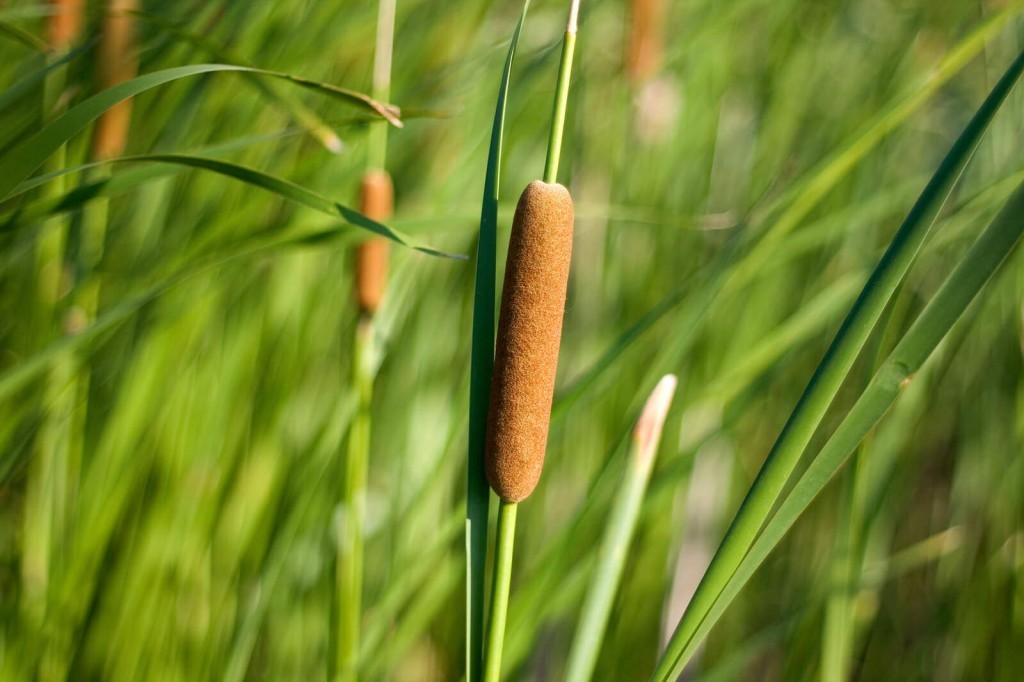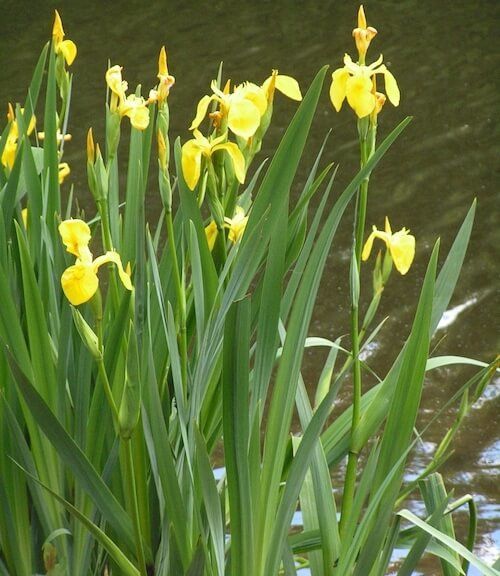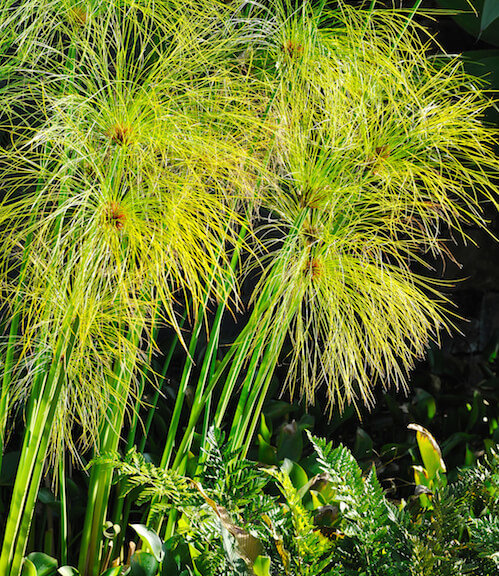Marginal Plants for a Goldfish Pond
What is a Marginal?
A marginal plant is not a species of pond plant; they are a group of species of pond plants that grow in the marginal areas. Marginal plants are semi aquatic plants that grow in shallow waters or in wet soil around the waters edge. They are pond plants that grow mainly out of the water but have their roots or lower halves submerged in water or wet soil. Goldfish pond designers who wish to incorporate marginal plants design a marginal shelf at a depth of 2-12 inches. As the slope of the pond drops, a terrace is added to plant or place potted marginals.

Marginal pond plants serve several functions for a goldfish pond. For one, they make the goldfish pond look nice. With the various species of marginals that grow tall, spread out, fill in or flower, a goldfish pond designer has the potential to create a beautiful space. By placing the tall growing marginals in the back and the low growing marginals that spread out along the waters surface, many layers of depth can be created.
Goldfish predators are another reason for planting marginal plants around a goldfish pond. Many animals including blue herons, raccoons and coyotes will catch and eat goldfish if they can get at them. Marginals create a buffer and eliminate the shallow areas where these predators like to hunt.
In the summer months, an outdoor goldfish pond that receives a lot of direct sunlight can raise the water temperature above what a goldfish prefers. Marginal pond plants can cast a shadow and create shade for the goldfish to seek relief in. Adding more shade to a goldfish pond will help regulate the water temperature of the entire pond.
Outdoor goldfish ponds for several reasons tend to have a lot of nutrients (nitrates) in the water. High levels of nitrates can cause and outbreak of pond algae or cause problems for goldfish. Marginal plants do a great job of using up this excess of of nutrients and eliminating elevated levels of nitrates from the goldfish pond water.

Marginals for Goldfish Ponds
- Sweet Flag
- Asthma Weed
- Water Iris
- Rush
- Cattails
- Papyrus
- Cannas

Care for Marginal Pond Plants
Plant each marginal plant at the depth they prefer to ensure a optimal growth. Marginal pond plants are best grown in pots or baskets to make them easier to maintain and avoid roots rupturing a pond liner. Cut back tall marginals before planting to keep the foliage in proportion with their root structure. Cutting back encourages a marginal to grow thicker and fuller which is a desirable look. Make cuts above the water line on hollow shoot marginals to avoid rotting. Fertilize during growing season for best results. Cut back to one inch above the substrate for winterizing, with the exception of cattails that can be cut back in the Spring. Overcrowded marginal pond plants can be pulled up and divided during spring when they have yet to grow back. Iris are an exception; these can be divided during the summer after they have flowered. When marginals are divided it’s recommended to trim back the roots before re-potting. Each divided marginal plant should consist of at least a substantial bud or shoot and a small cluster of roots.
Recommended Pond Supplies for Marginal Plants
Reviewed By: Tim Winter

Tim Winter has a strong affection for pets and wildlife. His years of experience caring for various types of pets has led him to share his knowledge with others on the best practices in pet care. Tim holds a Bachelor of Science from the University of Oregon School of Journalism and Communications.

I was reading your posting and I would really like for you to add something to this: preditors are not just the wild animals, I lost the following Oranda’s: 8 Redcaps, 4 Yellow cap and 4 White caps. I have a net over my pond and thought that it was preditor-proof, WRONG. There are two cats that have been fishing in my pond!!!!!!!! They have forced a gap betwen the rocks on the net and dined on my Oranda’s!!!!!!!!! I am soooooooo upset about it. These were mostly 6′ to 7″ Oranda’s. I have only one adult Redcap, 1 adult White cap and all of my original Fantail Calico’s. I had countless fry, now I have 3. I had to put bricks back to back all the way around. One of the cats fell into the pond and the adult Redcap Oranda ended up on top of the net; not once, but twice. She is still alive and the cats cannot get to the fish anymore. I have a large clump of bull rush; corkscrew and a huge clump of Yellow Flag Irises. I really appreciated your listing the Irises that can be grown on the shelves because that information is missing in the companies that sell them. I also very much appreciated the list that you created of the marginal plants. Thank you so much for your time in educating pond owners. Your site is informative and I am so appreciative to have a list of the plants that I can grow. Thank you.
Question: can water lilies/marginals be planted in a forest pond, not a fish pond with a liner, but a real pond???
yes they can. just be aware that some marginals can spread and take over a pond. Consider using pond plant baskets to contain any creeping types of marginals.